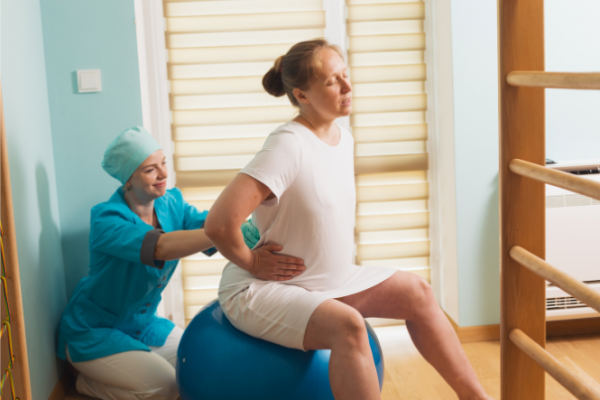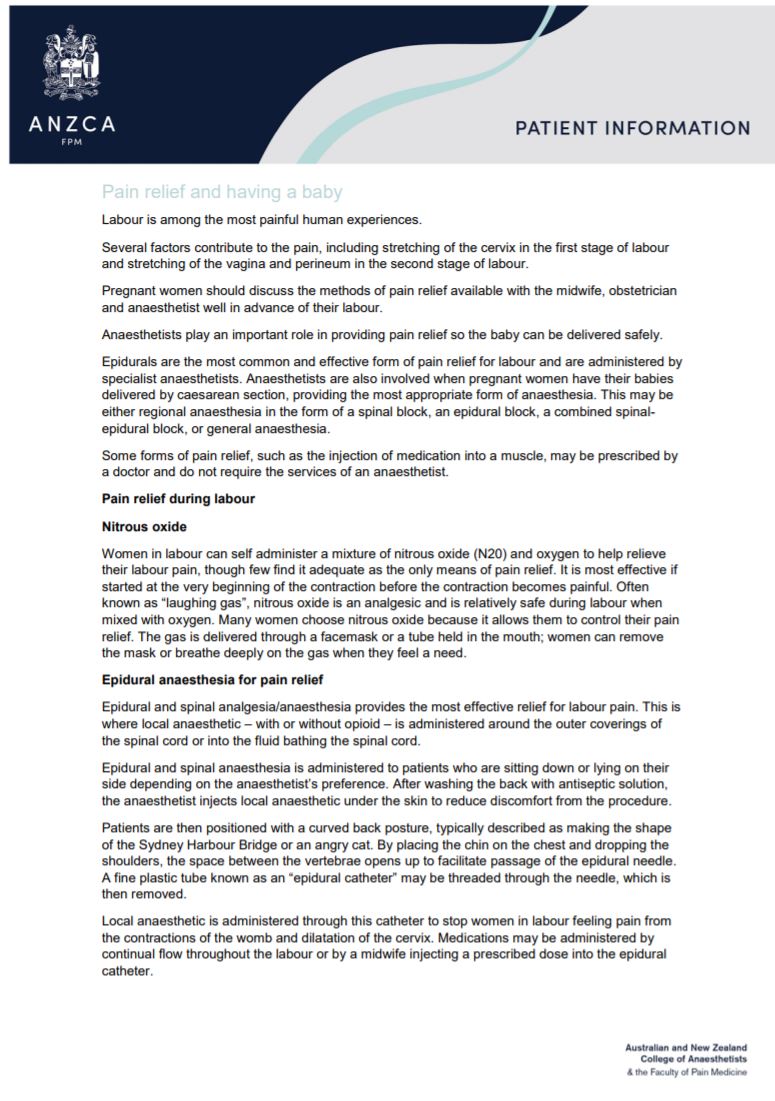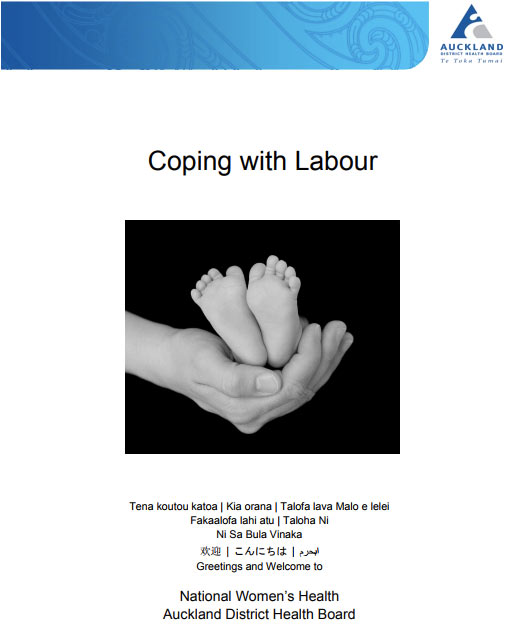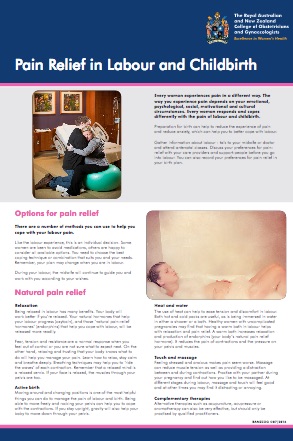Pain relief during childbirth
Key points about pain relief during childbirth
- Every birth and labour is different and each person experiences labour pain differently.
- Pain during labour is caused by contractions of the muscles of your uterus and by pressure on your cervix.
- This pain can begin as an achy feeling and build up to strong cramping in your abdomen, groin and back.
- Some women experience pain in their sides or thighs as well.
- As part of your birth plan, you need to think about what pain relief you want during labour and the birth.

There are many options for pain relief during labour and birth. These include non-medical techniques as well as different types of medication.
- Knowing your options and discussing them with your lead maternity carer (LMC) before your birth is important.
- Your choices may change when your labour starts.
- It’s great to have a plan, but it’s also OK to change it if you need to.
- Many things will influence how you feel during labour – the size and position of your baby, how quickly the labour comes on, how tired you feel, and how much pain you feel.

Image credit: Canva
Many non-medical pain relief options are used during childbirth. These can help you manage pain in labour by making you feel calm and by using your body’s natural pain relief systems. Some of the most common ones are listed below.
- Deep breathing.
- Back massage (mirimiri) or pressure can help with anxiety, pain, and sense of control.
- Warmth such as heat packs, warm shower or bath – water can be useful during early labour.
- Changing positions, eg, kneeling, sitting, standing, leaning, crouching and walking. A Swiss ball can also be useful.
- Relaxation with music, yoga, meditation.
- Aromatherapy.
- Acupuncture can provide pain relief for some people, you will need to arrange a trained provider.
- TENS (Transcutaneous Electrical Nerve Stimulator) – this stimulates the skin through small pads, it may be available to hire from your hospital or birth centre.
- Having one-to-one support by your midwife can reduce pain-relief requirements and improve satisfaction.
- Hypnosis can be practiced in advance, and has been shown to reduce the use of other pain relief options.
The main medical pain-relieving options for labour include nitrous oxide (laughing gas), injections for pain (such as pethidine or morphine) and epidural anaesthesia
The main medicines for pain relief during labour include nitrous oxide (laughing gas), opioid medicines and epidural pain relief.
Nitrous oxide (also called laughing gas or Entonox)
- Nitrous oxide is a gas you breathe in through a mouth piece when you're having a contraction.
- The gas takes a few seconds to work, so it's best to breathe from the mouth piece as soon as a contraction starts.
- Nitrous oxide doesn’t stop the pain completely but can lessen the pain of each contraction for some people.
Possible side effects
- Nausea (feeling sick), vomiting (being sick), confusion and disorientation.
Opioid medicines
- Common examples of opioid medicines include fentanyl, morphine, remifentanil and pethidine.
- These medicines are given through a drip (IV line) in your arm or hand, or an injection in your muscle.
- They don't block the pain completely but help to ease it.
- In some parts of Aotearoa New Zealand you might be given a pump to give yourself these medicines in labour called called patient controlled anaesthesia (PCA). You can ask your midwife or LMC what is available where you are having your baby.
Possible side effects
- Opioids can cause nausea, make you feel sleepy (sedated), and slow your breathing. Because of this, you will be monitored carefully after you’ve had these medicines.
- Opioids can also slow breathing for your baby after they are born or make them sleepy; this is more common with pethidine than other opioids. For this reason, pethidine is not used if you are in later stages of labour. Your baby will be closely checked after birth and their breathing will be supported if it’s slow.
Epidural pain relief
- Epidural injections are one of the most effective medicine-based pain relief option for child birth.
- They are placed in your lower back (at the level of the top of your hip bones) between the bones of your spine.
- A needle is used to put in a small plastic tube (called an epidural catheter).
- Local anaesthetic (a numbing medicine) and an opioid medicine are given through the epidural catheter.
- This takes away the pain of labour, while leaving you with some of the feelings of labour (eg, tightness with contractions) and you can still move your legs and push when it’s time to have your baby.
- Around 1 in 10 people still have some pain after the epidural medicine is given. Let your LMC know if you still have pain so they can adjust the epidural.
- After you’ve had an epidural your baby’s heart rate will be monitored closely. Your blood pressure will also be checked regularly.
- An epidural can cause your blood pressure to drop, this can make you feel faint or unwell and can affect your baby’s heart rate. If this happens, you will be given some fluids through your drip and medicine to improve your blood pressure if needed.
- An epidural can cause some muscle weakness in your legs and make it hard to move around. A lower dose epidural can make it easier to move around the room. Ask your LMC if this is available in your area.
- When you have epidural pain relief you might not be able to tell when you need to urinate (pee/mimi). Some people may also need a urinary catheter (a tube in to your bladder) so you can pee/mimi.
- An epidural does not:
- increase the chance of needing a Caesarean birth.
- increase the chance of needing forceps or ventouse birth to help the baby come out.
Possible side effects of an epidural
- Shivering/shaking or fever.
- Itchiness.
- Headache – around 1 in one hundred people. If this happens, you may need another epidural or other medicines to relieve it.
- Pain or tenderness where the epidural was placed.
- Very rare side effects include infection, bleeding, nerve damage.
- Talk to your LMC about the risks and benefits of all of the pain relief options so you can choose what is best for you.
Video: Anaesthesia and having a baby
Video: Epidural pain relief in labour - NZ Society of Anaesthetists and WDHB
(NZ Society of Anaesthetists and Waitematā District Health Board, NZ, 2016)
Resources
Your pregnancy(external link) Ministry of Health NZ, 2013
Coping with labour(external link) National Women’s Health Auckland DHB, NZ, 2018
Assisted birth(external link) RANZCOG, 2021
Pain relief in labour and childbirth(external link) RANZCOG, Australia, 2016
Pain relief and having a baby(external link) ANZCA, Australia
References
- Epidurals for managing your pain during child birth(external link) New Zealand Society of Anaesthetists Inc, 2016
- If labour does not go as planned(external link) Health New Zealand | Te Whatu Ora, 2023
- Childbirth – pain relief options(external link) Better Health, Australia, 2014
- Acute pain management – scientific evidence(external link) Australia and New Zealand College of Anaesthetists, 2020.
Brochures

ANZCA, Australia

National Women’s Health Auckland DHB, NZ, 2018

RANZCOG, Australia, 2016
Credits: Healthify editorial team. Healthify is brought to you by Health Navigator Charitable Trust.
Reviewed by: National Obstetric Anaesthetic Leads Network
Last reviewed:
Page last updated:





